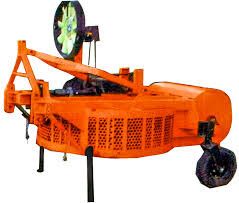
Sugarcane Trash Shredder Machine
2,000,000 Per Piece
1 Piece (MOQ)
Shredding plays a significant role in the disposal and management of sugarcane trash, which includes the leaves, tops, and other residual plant materials left after the harvesting of sugarcane. Efficient management of this biomass is crucial for maintaining agricultural productivity and minimizing environmental impact.Key Roles of Shredding in Sugarcane Trash Disposal: Volume Reduction: Shredding sugarcane trash significantly reduces its volume, making it easier to handle, transport, and store. This is particularly important in large-scale sugarcane farming, where the amount of trash generated can be substantial. Facilitation of Mulching: Shredded sugarcane trash can be used as mulch in the fields. The shredded material spreads easily over the soil, helping to retain moisture, suppress weed growth, and improve soil health. Mulching with sugarcane trash can also reduce soil erosion and enhance crop yields. Improvement of Composting: Shredding sugarcane trash accelerates the composting process by increasing the surface area of the material. This allows for quicker microbial breakdown, resulting in nutrient-rich compost that can be applied back to the fields to enhance soil fertility. Support for Biomass Energy Production: Shredded sugarcane trash can be utilized as a feedstock for biomass energy production. The uniformity and increased surface area of shredded trash make it more efficient to burn in biomass boilers, leading to better energy recovery and contributing to renewable energy generation. Reduction of Air Pollution: In many sugarcane-growing regions, trash burning is a common but environmentally harmful practice. Shredding offers an alternative by providing a way to repurpose the trash instead of burning it, which reduces air pollution and greenhouse gas emissions. Enhancement of Soil Quality: When shredded sugarcane trash is incorporated into the soil, it decomposes more quickly and evenly, adding organic matter that improves soil structure, increases water retention, and enhances nutrient availability for subsequent crops. Pest and Disease Management: Shredding sugarcane trash can help in reducing the incidence of pests and diseases that might thrive in unprocessed trash. By breaking down the trash, shredding disrupts the habitat of pests and accelerates the decomposition of disease-carrying plant material. Cost-Effective Waste Management: Shredding is a cost-effective way to manage sugarcane trash, turning what is often seen as waste into a valuable resource. This not only reduces disposal costs but also provides additional benefits to farmers through the production of mulch, compost, or energy. In summary, shredding is an essential process in the disposal and management of sugarcane trash. It enables the efficient reduction of waste volume, facilitates recycling and energy production, and supports sustainable agricultural practices. By repurposing sugarcane trash through shredding, farmers can enhance soil health, reduce environmental impact, and improve overall farm productivity.
Material : Stainless Steel
Automation Grade : Automatic
Capacity : 1500-2000 Kg/hr
Usage/Application : Industrial
Country of Origin : India
...more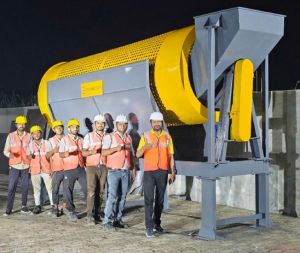
Screening Trommel
1,200,000 Per Piece
1 Piece (MOQ)
TISPL is a premier company specialising in the design, manufacturing, and distribution of high-quality trommel screens. Our advanced trommel screen technology is engineered to efficiently separate and classify various materials, such as soil, compost, minerals, and waste, by size and type. Our trommel are renowned for their robust construction, versatility, and reliability, making them an essential tool in a wide range of industries, including mining, recycling, and agriculture.
Brand Name : Technocrat
Application : Industrial
Voltage : 220V
Warranty : 1 Year
Country of Origin : India
Automation Grade : Automatic
...more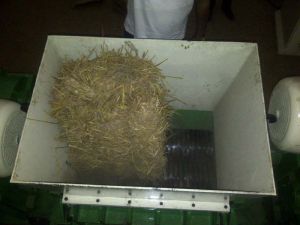
Rice Paddy Straw Shredder Machine
2,500,000 Per Piece
1 Piece (MOQ)
Rice paddy straw refers to the dry stalks left behind after the grains of rice have been harvested. It is a by-product of rice cultivation and is often found in large quantities in regions where rice farming is prevalent.Uses of Rice Paddy Straw: Animal Feed: It can be used as fodder for livestock, particularly in areas where other feed options are limited. Mulch and Compost: Rice straw is commonly used as mulch in gardens and fields to retain soil moisture and as a component in compost. Biofuel: With the right processing, rice straw can be used to produce biofuel or biogas. Building Material: In some regions, rice straw is used in the construction of traditional houses, particularly for thatching roofs. Paper Production: The fiber content in rice straw makes it a potential raw material for paper production. Mushroom Cultivation: It can serve as a substrate for growing mushrooms. Environmental Concerns: In many rice-growing regions, burning rice straw is a common practice to clear fields for the next planting season, which can contribute to air pollution. Each of these uses can contribute to more sustainable agricultural practices by minimizing waste and providing additional value from rice cultivation.
Application : Agriculture Use
Material : Stainless Steel
Automatic Grade : Automatic
Brand Name : Technocrat
Country of Origin : India
...more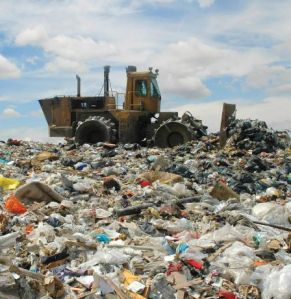
Municipal Solid Waste Shredder Machine
2,500,000 Per Piece
1 Piece (MOQ)
Shredding is a critical process in the management of municipal solid waste (MSW), which encompasses everyday waste materials generated by households, businesses, and institutions. The diverse nature of MSW, including organic matter, plastics, paper, metals, and glass, makes it necessary to implement efficient methods for processing and disposal. Shredding plays a pivotal role in enhancing the efficiency, safety, and sustainability of MSW management.Key Roles of Shredding in Municipal Solid Waste Management: Volume Reduction: Shredding reduces the volume of waste, making it easier to handle, transport, and store. This is especially important in urban areas where waste generation is high, and landfill space is limited. Reduced volume also leads to lower transportation costs and more efficient use of landfill space. Facilitation of Waste Separation: Shredding breaks down waste into smaller, more uniform pieces, which facilitates the separation of different materials for recycling. For example, metals, plastics, and organic waste can be more easily sorted and processed after shredding, improving the overall efficiency of recycling operations. Preparation for Incineration and Energy Recovery: Shredded waste has a higher surface area, which enhances the combustion process in waste-to-energy plants. This leads to more efficient energy recovery and reduced emissions during incineration, contributing to more sustainable waste management practices. Composting and Organic Waste Management: For organic components of MSW, such as food scraps and yard waste, shredding accelerates the composting process by increasing the surface area of the material, facilitating faster decomposition. This results in higher-quality compost and reduces the volume of organic waste sent to landfills. Improvement in Landfill Operations: Shredded waste is more compact and uniform, which improves the operational efficiency of landfills. It allows for better compaction, reducing the need for frequent cover materials and extending the lifespan of landfills. Additionally, shredded waste is less prone to generating large voids or uneven settling, which can cause operational challenges. Reduction of Pest and Odor Problems: Shredding can help mitigate issues related to pests and odors in waste management facilities. By breaking down waste into smaller pieces, it reduces the risk of pest infestation and speeds up the degradation of organic material, which can help control odors. Support for Waste Treatment Processes: Shredding prepares MSW for various treatment processes, such as mechanical biological treatment (MBT) and anaerobic digestion, by homogenizing the waste material. This leads to more consistent and efficient processing, whether the goal is material recovery, energy production, or the stabilization of waste before disposal. In summary, shredding is a vital component of municipal solid waste management, contributing to the reduction of waste volume, facilitating recycling and composting, improving energy recovery, and enhancing landfill operations. It plays a significant role in promoting sustainable waste management practices and optimizing the overall efficiency of waste handling systems.
Usage/Application : Solid Waste Management
Brand Name : Technocrat
Country of Origin : India
...more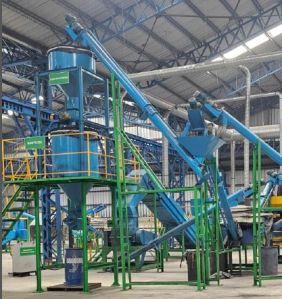
Lithium-Ion Battery Recycling plant
5,000,000 Per Piece
1 Piece (MOQ)
Lithium-ion battery recycling is an important and rapidly evolving field due to the increasing demand for electric vehicles (EVs), portable electronics, and renewable energy storage. Recycling these batteries is crucial for several reasons: Resource Recovery: Lithium-ion batteries contain valuable metals like lithium, cobalt, nickel, and manganese. Recycling allows the recovery of these materials, reducing the need for mining, which is both environmentally and socially challenging. Environmental Protection: Improper disposal of lithium-ion batteries can lead to environmental contamination, as these batteries contain toxic materials that can leach into the soil and water. Recycling helps prevent environmental harm. Energy Savings: Recycling batteries is generally less energy-intensive than mining and refining raw materials. For instance, recycling cobalt and nickel from batteries uses significantly less energy compared to extracting these metals from ores. Regulatory Compliance: Many countries are implementing regulations that require the proper disposal and recycling of lithium-ion batteries. This is particularly relevant in the EU, where stringent rules are in place for battery recycling. Supply Chain Security: Recycling can help mitigate the risks associated with the supply of critical materials like cobalt and lithium, which are concentrated in a few countries. By recycling, manufacturers can reduce dependency on these limited sources. Recycling Process: The process of recycling lithium-ion batteries typically involves several steps: Collection and Transportation: Batteries are collected from various sources and transported to recycling facilities. Discharging: Batteries are safely discharged to prevent fire or explosion during processing. Dismantling: The batteries are dismantled to separate the different components (e.g., cathodes, anodes, electrolyte, casing). Crushing and Sorting: The components are crushed and sorted. This step may involve mechanical processes like shredding and physical separation techniques like sieving. Chemical Processing: The separated materials undergo chemical treatments to recover metals. This might involve processes like hydrometallurgy (using acids to dissolve metals) or pyrometallurgy (using heat to extract metals). Purification: The recovered metals are purified to a high standard so they can be reused in the production of new batteries. Challenges in Recycling: Economic Viability: The cost of recycling can sometimes exceed the value of the materials recovered, making it less attractive without regulatory incentives. Complexity of Battery Design: Lithium-ion batteries come in various chemistries and designs, making it challenging to develop a one-size-fits-all recycling process. Safety Concerns: Handling and processing lithium-ion batteries can be dangerous due to the risk of fire, explosion, and exposure to hazardous materials. Advancements and Future Outlook: Research is ongoing to improve the efficiency and cost-effectiveness of lithium-ion battery recycling. Innovations include developing better methods for material recovery, designing batteries that are easier to recycle, and creating closed-loop systems where materials from old batteries are directly used to produce new ones. As the demand for batteries continues to grow, the importance of recycling will only increase, making it a critical component of sustainable energy and electronics ecosystems.
Brand Name : Technocrat
Driven Type : Electric
Automatic Grade : Automatic
Voltage : 220V
Country of Origin : India
...more
Industrial Waste Shredder Machine
2,350,000 Per Piece
1 Piece (MOQ)
Shredding is a critical process in the management of industrial waste, which encompasses a wide range of materials generated by manufacturing, construction, chemical production, and other industrial activities. The diverse nature of industrial waste—ranging from metal scraps and plastics to chemicals and packaging materials—requires efficient and effective processing methods to ensure safe disposal and promote recycling and resource recovery.Key Roles of Shredding in Industrial Waste Management: Volume Reduction: Shredding reduces the volume of industrial waste, making it more manageable for storage, transportation, and disposal. This is especially important for bulky or dense materials, as it helps in optimizing space and lowering transportation costs, leading to more efficient waste management. Facilitation of Recycling and Resource Recovery: Shredding breaks down industrial waste into smaller, more uniform pieces, facilitating the separation and recovery of valuable materials such as metals, plastics, and rubber. These recovered materials can then be recycled and reintroduced into the production process, contributing to resource conservation and reducing the need for virgin materials. Preparation for Further Treatment: Shredded industrial waste is often easier to process in subsequent treatment stages, such as incineration, chemical treatment, or thermal decomposition. The increased surface area of the shredded material enhances the efficiency of these processes, ensuring more complete treatment and safer disposal. Improvement in Waste Handling and Safety: Shredding enhances the safety of handling industrial waste by reducing the size of sharp, hazardous, or awkwardly shaped materials. This minimizes the risk of injury to workers and reduces the likelihood of accidents during transportation and processing. Support for Energy Recovery: Shredded industrial waste can be used as a feedstock for waste-to-energy facilities, where it is incinerated to produce electricity or heat. The smaller, uniform particles produced by shredding improve combustion efficiency, resulting in higher energy yields and reduced emissions. Compliance with Regulatory Requirements: Shredding is often a necessary step to comply with environmental regulations governing industrial waste disposal. By breaking down waste into unrecognizable forms, shredding helps ensure that sensitive or hazardous materials are managed in accordance with legal standards, preventing environmental contamination and public health risks. Enhanced Landfill Management: When industrial waste is destined for landfill disposal, shredding ensures better compaction and stabilization of the waste. This extends the lifespan of landfills and reduces the environmental impact by minimizing voids and uneven settling, which can lead to operational challenges and increased greenhouse gas emissions. Reduction of Environmental Impact: Shredding industrial waste can significantly reduce its environmental footprint by enabling more efficient recycling, safe disposal, and energy recovery. This helps minimize the negative impacts of industrial activities on the environment and supports the transition towards more sustainable industrial practices. In summary, shredding plays a vital role in industrial waste management by reducing waste volume, facilitating recycling and resource recovery, improving safety, and supporting compliance with regulatory requirements. It enhances the overall efficiency and sustainability of managing industrial waste, turning potential pollutants into valuable resources.
Brand Name : Technocrat
Shredding Material : Industrial Waste
Country of Origin : India
...more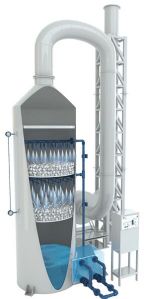
Industrial Scrubber System
500,000 Per Piece
1 Piece (MOQ)
Brand Name : Technocrat
Driven Type : Electric
Automatic Grade : Automatic
Application : Industrial
Voltage : 220V
Country of Origin : India
...more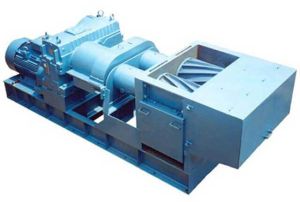
Empty Fruit Bunch Shredder Machine
2,100,000 Per Piece
1 Piece (MOQ)
Shredding plays a crucial role in the management of empty palm bunches (EPBs), a significant byproduct of the palm oil industry. After the extraction of palm oil, the leftover empty fruit bunches (EFBs) are often abundant, and efficient management of this biomass is essential for both environmental sustainability and economic benefits.Key Roles of Shredding in Empty Palm Bunches Management: Volume Reduction: Shredding reduces the volume of empty palm bunches, making them easier to handle, transport, and store. This is particularly important given the large quantities of EFBs generated during palm oil production, as it helps in optimizing space and reducing transportation costs. Facilitation of Composting: Shredding increases the surface area of the EFBs, which accelerates the decomposition process. This makes the shredded material ideal for composting, leading to the production of nutrient-rich organic fertilizer that can be used to enhance soil fertility in palm plantations or other agricultural applications. Preparation for Biomass Energy Production: Shredded EFBs can be used as a feedstock for biomass energy production. The smaller, uniform pieces are easier to process in biomass boilers, improving the efficiency of combustion and energy generation. This helps in converting waste into a valuable energy resource, reducing reliance on fossil fuels. Mulching Material: Shredded EFBs serve as an excellent mulching material, which can be applied to the base of palm trees or other crops. Mulching with EFBs helps retain soil moisture, suppress weeds, and add organic matter to the soil, promoting healthier plant growth and reducing the need for chemical fertilizers. Reduction of Environmental Impact: Proper management of EFBs through shredding reduces the environmental impact associated with their disposal. Instead of being left to rot or burned, which can contribute to greenhouse gas emissions and environmental pollution, shredded EFBs can be repurposed in environmentally friendly ways. Support for Biochar Production: Shredded EFBs can be used as a raw material for biochar production through pyrolysis. Biochar is a stable form of carbon that can be added to soil to improve fertility, retain nutrients, and sequester carbon, contributing to carbon capture and climate change mitigation efforts. Raw Material for Industrial Applications: The shredded EFBs can also be utilized as a raw material in various industrial applications, such as the production of particleboard, fiberboard, or other composite materials. This creates additional economic value from what would otherwise be considered waste. In summary, shredding is an essential process in the management of empty palm bunches, enabling the effective utilization of this biomass in various applications, from composting and mulching to energy production and industrial use. It supports sustainable practices within the palm oil industry, turning a waste product into valuable resources while minimizing environmental impacts.
Application : Agriculture Use
Material : Stainless Steel
Shredding Capacity : 1-500 Kg/hr
Automatic Grade : Automatic
Brand Name : Technocrat
Country of Origin : India
...more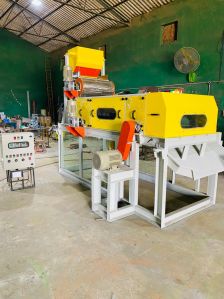
Eddy Current Separator
1,150,000 Per Piece
1 Piece (MOQ)
Eddy Current Separators (ECS) are machines used in the recycling industry to separate non-ferrous metals (like aluminum, copper, and brass) from other materials. They operate based on the principle of electromagnetic induction.Here's a brief overview: Working Principle: When a conductive material passes through a changing magnetic field, it induces currents (called eddy currents) within the material. These eddy currents create their own magnetic fields, which oppose the original magnetic field. This interaction causes the non-ferrous metals to be repelled or deflected from their original path. Components: An ECS typically consists of a conveyor belt, a high-speed rotating magnetic drum, and sometimes additional equipment like vibratory feeders. The magnetic drum creates the magnetic field needed to induce eddy currents in the non-ferrous metals. Process: Materials are fed onto the conveyor belt, which transports them towards the rotating magnetic drum. Ferrous metals are removed using magnetic separators before reaching the ECS. Non-ferrous metals are then repelled from the belt due to the eddy currents, separating them from non-metallic materials, which fall off the end of the conveyor. Applications: Eddy Current Separators are widely used in recycling plants for sorting and recovering valuable non-ferrous metals from waste streams, such as aluminum from plastic or glass, copper from shredded cars, or mixed municipal solid waste. Advantages: They are efficient, can process large volumes of material, and significantly reduce the need for manual sorting, leading to higher purity levels of recovered materials. In summary, Eddy Current Separators play a crucial role in modern recycling, helping to recover valuable metals and reduce waste.
Brand Name : Technocrat
Driven Type : Electric
Shape : Rectangular
Automatic Grade : Automatic
Usage : Industrial
Warranty : 1 Year
Country of Origin : India
...more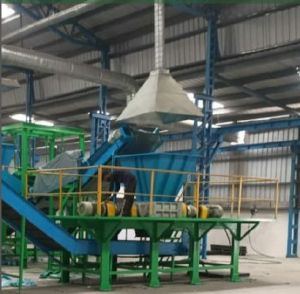
E Waste Recycling Plant
4,000,000 Per Piece
1 Piece (MOQ)
E-Waste Recycling refers to the process of recovering materials from discarded electronic devices to reduce waste, conserve resources, and minimize environmental impact. As the global consumption of electronic devices continues to rise, so does the generation of electronic waste, or e-waste. This category includes items such as smartphones, computers, televisions, and home appliances that have reached the end of their useful life.Importance of E-Waste Recycling : Environmental Protection: E-waste contains hazardous substances like lead, mercury, and cadmium, which can leach into the soil and water if not properly disposed of. Recycling prevents these toxic materials from polluting the environment. Resource Conservation: Electronic devices contain valuable materials, including precious metals like gold, silver, and copper. Recycling helps recover these materials, reducing the need for mining and conserving natural resources. Energy Savings: Recycling materials from e-waste often requires less energy compared to extracting and processing raw materials. This contributes to lower greenhouse gas emissions. Economic Benefits: The e-waste recycling industry creates jobs in collection, processing, and material recovery. Recycled materials can also be sold to manufacturers, supporting economic growth. The E-Waste Recycling Process : Collection and Transportation: E-waste is collected from households, businesses, and other sources, then transported to recycling facilities. Sorting and Dismantling: Devices are sorted based on type and material. They are then manually or mechanically dismantled to separate components like plastics, metals, and circuit boards. Shredding and Separation: Non-hazardous components are shredded into smaller pieces. Advanced techniques like magnetic and eddy current separation are used to recover metals. Material Recovery: Recovered materials, including metals and plastics, are processed and sold to manufacturers for reuse in new products. Safe Disposal: Hazardous materials are safely disposed of in compliance with environmental regulations to prevent pollution. Conclusion :E-waste recycling is a critical component of sustainable waste management. By properly recycling e-waste, we can protect the environment, conserve valuable resources, and support economic growth. As technology continues to evolve, the importance of efficient and safe e-waste recycling will only increase.
Brand Name : Technocrat
Driven Type : Electric
Automatic Grade : Automatic
Application : E Waste Recycling
Warranty : 1year
Country of Origin : India
...more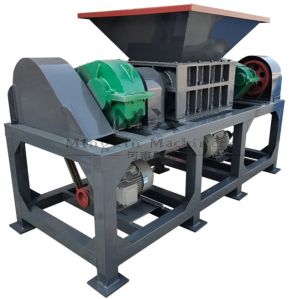
Double Shaft Wood Shredder Machine
2,000,000 Per Piece
1 Piece (MOQ)
Shredding plays a crucial role in the tyre recycling process, transforming end-of-life tyres into materials that can be repurposed for various applications. Tyres are made of durable materials designed to withstand harsh conditions, which makes them challenging to dispose of or recycle in their whole form. Shredding is the first step in breaking down tyres into smaller, more manageable pieces, facilitating further processing and recycling.Key Roles of Shredding in Tyre Recycling: Volume Reduction: Shredding significantly reduces the volume of tyres, making storage, handling, and transportation more efficient and cost-effective. This is essential for managing large quantities of discarded tyres. Material Separation: Tyres consist of rubber, steel, and textile components. Shredding helps in separating these materials, allowing for their individual recovery and recycling. Advanced shredding processes can ensure that the rubber is isolated from the steel belts and textile fibers. Preparation for Further Processing: Shredded tyre material can be further processed into smaller particles, such as crumb rubber, which is used in a variety of products including asphalt, playground surfaces, and athletic tracks. Shredded tyres can also be used as a fuel source in industrial processes. Environmental Impact: Shredding tyres reduces the environmental impact associated with tyre disposal. It helps in diverting tyres from landfills, where they can take up significant space and pose fire risks. Instead, the shredded material can be reused, contributing to a circular economy. Economic Value: The process of shredding and recycling tyres creates economic value by generating raw materials for new products. It also supports industries involved in the production of recycled rubber goods and fuels. In summary, shredding is a vital step in tyre recycling, enabling the transformation of waste tyres into valuable resources while promoting environmental sustainability and economic benefits.
Application : Industrial
Brand Name : Technocrat
Country of Origin : India
Warranty : 1 Year
...more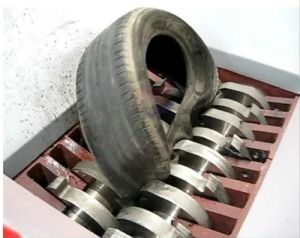
Double Shaft Tyre Shredder Machine
1,000,000 Per Piece
Shredding is a critical process in the disposal of wood waste, which is generated from various sources such as construction and demolition, furniture manufacturing, landscaping, and forestry activities. Wood shredding transforms bulky wood waste into smaller, manageable pieces, facilitating more efficient disposal, recycling, or repurposing.Key Roles of Wood Shredding in Disposal: Volume Reduction: Shredding reduces the size and volume of wood waste, making it easier to handle, transport, and store. This is particularly important for bulky wood materials like tree branches, pallets, and construction debris, which can take up significant space if not processed. Preparation for Recycling: Shredded wood can be repurposed and recycled into various products such as mulch, compost, particleboard, and wood pellets. Shredding is the first step in transforming waste wood into valuable materials that can be used in landscaping, agriculture, and energy production. Facilitation of Composting: Shredded wood chips are ideal for composting, as they break down more quickly and evenly compared to larger wood pieces. This accelerates the composting process, resulting in high-quality compost that can be used to enrich soil in gardens and agricultural fields. Reduction of Landfill Use: Shredding wood waste before disposal significantly reduces the amount of space required in landfills. By minimizing the volume of wood waste, shredding helps extend the lifespan of landfills and reduces the environmental impact of waste disposal. Support for Biomass Energy Production: Shredded wood can be used as a biomass fuel for energy production. The smaller, uniform wood chips produced by shredding are easier to burn in biomass boilers, enhancing combustion efficiency and contributing to renewable energy generation. Improvement in Waste Management Efficiency: Shredding wood waste improves the overall efficiency of waste management operations. It allows for better sorting, handling, and processing of wood materials, ensuring that they are disposed of in an environmentally responsible manner. Pest and Disease Control: Shredding wood waste, particularly from diseased or pest-infested trees, helps in reducing the spread of pests and diseases. The shredding process can destroy larvae and eggs, preventing the spread of invasive species and pathogens. Aesthetic and Safety Benefits: Shredding large, unwieldy pieces of wood waste into smaller, manageable chips improves safety and aesthetics, particularly in public areas, construction sites, and waste management facilities. This reduces the risk of accidents and improves the overall appearance of disposal sites. In summary, wood shredding plays a vital role in the efficient disposal and management of wood waste, contributing to volume reduction, recycling, composting, energy production, and environmental protection. It ensures that wood waste is handled in a sustainable and responsible manner, turning a potential disposal problem into valuable resources.
Application : Industries
Brand Name : Technocrat
Country of Origin : India
Warranty : 1 Year
...more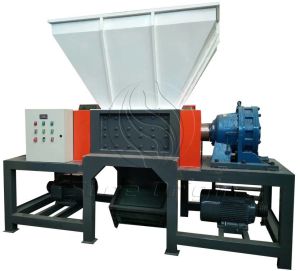
Double Shaft Hazardous Waste Shredder Machine
1,200,000 Per piece
Shredding is a critical process in the disposal of hazardous waste, playing a key role in ensuring that these materials are managed safely and efficiently. Hazardous waste includes substances that pose significant risks to human health and the environment if not properly handled. These can include chemicals, medical waste, electronic waste, and other toxic materials.Key Roles of Shredding in Hazardous Waste Disposal: Volume Reduction: Shredding hazardous waste reduces its volume, making it easier to handle, transport, and store. This volume reduction is particularly important for managing large quantities of waste in a controlled and safe manner, minimizing the space required for storage or disposal. Material Destruction: Shredding destroys hazardous materials to a form that is less recognizable and reduces the risk of them being misused or illegally repurposed. This is especially important for items like expired pharmaceuticals, confidential documents, or sensitive electronic components. Facilitation of Treatment Processes: Once shredded, hazardous waste can be more easily subjected to further treatment processes, such as incineration, chemical neutralization, or stabilization. Shredding increases the surface area of the waste, making it more accessible for these treatments and ensuring more complete destruction or neutralization of hazardous components. Enhanced Safety: By breaking down hazardous materials into smaller, more manageable pieces, shredding reduces the risk of exposure to dangerous substances during handling and transportation. It also decreases the likelihood of accidental releases or spills, contributing to safer waste management practices. Regulatory Compliance: Proper shredding of hazardous waste is often a requirement for regulatory compliance. It ensures that hazardous materials are rendered unrecognizable and are disposed of in accordance with legal standards, helping to prevent environmental contamination and human health risks. Waste Minimization and Resource Recovery: Shredding can facilitate the recovery of valuable materials from hazardous waste, such as metals from electronic waste, that can be recycled and reused. This not only minimizes the amount of waste that needs to be disposed of but also supports resource conservation efforts. In summary, shredding is a vital component in the safe and effective disposal of hazardous waste. It reduces the volume and risks associated with hazardous materials, aids in regulatory compliance, and enhances the overall safety and efficiency of waste disposal operations.
Application : Industrial
Material : Stainless Steel
Shredding Material : Hazardous Waste
Shredding Capacity : 1-500 Kg/hr
Brand Name : Technocrat
Country of Origin : India
...more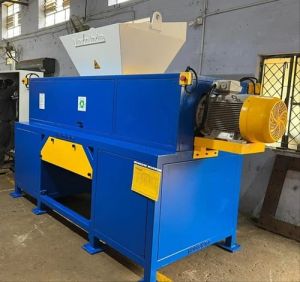
Double Shaft Electronic Waste Shredder Machine
1,500,000 Per Piece
1 Piece (MOQ)
Shredding is a fundamental process in the recycling of electronic waste (e-waste), which includes discarded electronic devices like computers, smartphones, televisions, and other electronic appliances. E-waste contains valuable materials that can be recovered, as well as hazardous substances that need to be safely managed. Shredding is the first step in breaking down e-waste into smaller, manageable pieces, facilitating the separation and recovery of valuable components.Key Roles of Shredding in E-Waste Recycling: Material Liberation and Separation: Shredding e-waste breaks it down into smaller fragments, which allows for the liberation of different materials embedded within the devices, such as metals, plastics, and glass. This makes it easier to separate these materials using various techniques like magnetic separation, eddy currents, and air classification. Recovery of Valuable Materials: E-waste contains precious metals such as gold, silver, copper, and rare earth elements, which can be recovered and recycled. Shredding enables these valuable materials to be efficiently extracted from the bulk e-waste, contributing to resource conservation and reducing the need for mining new raw materials. Safe Handling of Hazardous Components: E-waste often contains hazardous substances like lead, mercury, and cadmium. Shredding helps in safely processing these materials by ensuring they are contained and managed properly, reducing the risk of environmental contamination and exposure to toxic substances. Volume Reduction: Shredding reduces the volume of e-waste, making it easier to store, transport, and process. This is particularly important given the large and growing quantities of e-waste generated globally, helping to manage the space required for recycling facilities and landfills. Preparation for Further Processing: After shredding, the e-waste can be subjected to further processing techniques, such as smelting or chemical extraction, to recover specific materials. Shredding increases the surface area of the materials, enhancing the efficiency of these subsequent processes. Environmental Impact: By facilitating the recycling of e-waste, shredding helps reduce the environmental impact associated with electronic device disposal. It diverts e-waste from landfills, where it can leach hazardous substances into the soil and water, and promotes the reuse of materials, contributing to a more sustainable circular economy. Regulatory Compliance: Shredding e-waste is often a necessary step to comply with regulations that require the secure destruction of data and the proper handling of hazardous components. This ensures that e-waste is processed in a manner that meets legal and environmental standards. In summary, shredding is an essential part of e-waste recycling, enabling the efficient recovery of valuable materials, safe disposal of hazardous substances, and reducing the overall environmental footprint of discarded electronics.
Application : Industrial
Material : Stainless Steel
Shredding Material : Electronic Waste
Automatic Grade : Automatic
Brand Name : Technocrat
Country of Origin : India
...more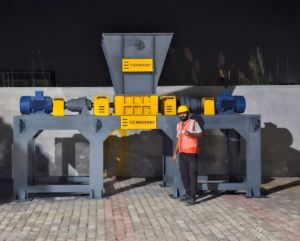
Double Shaft Automatic Metal Shredder Machine
2,000,000 Per Piece
1 Piece (MOQ)
Shredding is a fundamental process in metal recycling, playing a crucial role in transforming scrap metal into valuable raw materials that can be reused in various industries. The metal recycling process involves collecting, sorting, shredding, and melting down scrap metals to produce new metal products. Shredding is a key step that facilitates efficient recycling and contributes to environmental sustainability.Key Roles of Shredding in Metal Recycling: Volume Reduction: Shredding reduces the size and volume of large metal objects, such as cars, appliances, and industrial scrap, making them easier to handle, transport, and process. This volume reduction is essential for optimizing storage and transportation, as well as for improving the efficiency of the recycling process. Material Liberation and Separation: Shredding breaks down complex metal items into smaller pieces, liberating different types of metals and materials from one another. For instance, in the case of cars or electronics, shredding helps separate metals like steel, aluminum, and copper from plastics, rubber, and other non-metal components, facilitating their recovery and recycling. Preparation for Melting: Shredded metal has a larger surface area relative to its volume, which enhances the melting process in furnaces. The smaller, uniform pieces melt more quickly and evenly, leading to more efficient smelting and refining processes, and reducing energy consumption during recycling. Improvement in Sorting Efficiency: After shredding, metal fragments can be more easily sorted using various methods, such as magnetic separation, eddy currents, or air classification. These techniques allow for the efficient separation of ferrous and non-ferrous metals, as well as the removal of non-metallic contaminants, ensuring a higher purity of recycled metal. Enhanced Recycling Rates: Shredding contributes to higher recycling rates by making it possible to recover more metal from complex products and mixed scrap. By effectively breaking down and sorting metal-containing products, shredding maximizes the amount of metal that can be reclaimed and reintroduced into the manufacturing process. Reduction of Environmental Impact: Recycling metal through shredding reduces the need for mining and processing new raw materials, leading to significant energy savings and a lower carbon footprint. It also minimizes the environmental impact of metal waste, which might otherwise end up in landfills, contributing to pollution and resource depletion. Economic Benefits: Shredded metal is a valuable commodity in the recycling market. The process of shredding and recycling metal generates economic value by creating raw materials for new products, reducing the costs associated with raw material extraction, and supporting the circular economy. Compliance with Environmental Regulations: Shredding metal waste helps companies comply with environmental regulations by ensuring that scrap metal is processed in an environmentally responsible manner. Proper shredding and recycling reduce the environmental liabilities associated with metal waste disposal and promote sustainable practices. In summary, shredding is an essential process in metal recycling, enabling efficient size reduction, material liberation, and preparation for melting. It enhances recycling rates, reduces environmental impact, and supports the circular economy by turning scrap metal into valuable resources for new products.
Warranty : 1 Year
Automation Grade : Automatic
Brand Name : Technocrat
Country of Origin : India
Warranty : 1 Year
...more
Double Shaft Animal Bone Skin Shredder Machine
1,100,000 Per Piece
1 Piece (MOQ)
Shredding animal bones is a crucial step in the production of gelatin, a versatile ingredient used in food, pharmaceuticals, and various industrial applications. Gelatin is derived from the collagen found in animal bones, skins, and connective tissues. The process of making gelatin requires breaking down these raw materials to extract the collagen, and shredding plays a significant role in this initial stage.Key Roles of Animal Bones Shredding in Gelatin Production: Size Reduction: Shredding reduces large animal bones into smaller, uniform pieces. This size reduction is essential for ensuring that the bones are more easily processed in subsequent stages, such as boiling and chemical treatment, which are necessary for extracting collagen. Increased Surface Area: Shredding the bones increases their surface area, which facilitates more efficient extraction of collagen. The greater surface area allows for better penetration of water, acids, or enzymes used in the extraction process, leading to higher yields of gelatin. Facilitation of Pre-treatment Processes: Before collagen can be extracted, bones often undergo pre-treatment processes such as degreasing and demineralization. Shredded bones are more accessible to these treatments, allowing for a more thorough removal of fats, minerals, and other impurities that could affect the quality of the gelatin. Enhanced Efficiency of Collagen Extraction: During the gelatin production process, the shredded bones are subjected to prolonged boiling or hydrolysis to extract collagen. The smaller and more uniform pieces produced by shredding allow for more consistent and efficient extraction, resulting in a purer and higher-quality gelatin product. Reduction of Processing Time: By shredding bones before processing, the overall time required for gelatin production can be reduced. The smaller bone fragments cook more quickly and evenly, which speeds up the gelatin extraction process and improves production efficiency. Waste Minimization: Shredding helps in minimizing waste by ensuring that nearly all parts of the bones are utilized for gelatin extraction. This contributes to more sustainable production practices, as it maximizes the use of animal by-products that might otherwise be discarded. Improvement in Gelatin Quality: Properly shredded bones contribute to a more controlled and uniform extraction process, which can improve the clarity, strength, and overall quality of the gelatin produced. High-quality gelatin is essential for its various applications, including food products, pharmaceuticals, and photographic films. Ease of Handling and Transport: Shredded bones are easier to handle, transport, and store compared to whole bones. This logistical advantage is important for gelatin manufacturers who need to manage large volumes of raw materials efficiently. In summary, shredding animal bones is a critical step in gelatin production, facilitating efficient collagen extraction, improving product quality, and enhancing overall production efficiency. This process ensures that animal by-products are effectively utilized, supporting sustainable and resource-efficient practices in the food and pharmaceutical industries.
Application : Industrial
Material : Stainless Steel
Shredding Material : Animal Bones & Skin
Shredding Capacity : 1-500 Kg/hr
Automatic Grade : Automatic
Brand Name : Technocrat
Country of Origin : India
...more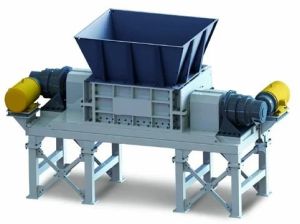
Double Shaft AFR Shredder Machine
2,500,000 Per Piece
Shredding plays a pivotal role in the utilization of Alternative Fuels and Raw Materials (AFR) in the cement industry. AFR refers to waste-derived fuels and materials that can be used as a substitute for conventional fuels and raw materials in cement production. These can include waste tires, plastics, industrial waste, biomass, and other non-recyclable materials. The use of AFR not only reduces reliance on fossil fuels but also supports waste management and environmental sustainability.Key Roles of Shredding in AFR Usage in the Cement Industry: Preparation of Waste Materials: Shredding is essential for processing various waste materials into a form that can be efficiently used as AFR in cement kilns. By reducing the size and volume of materials like tires, plastics, and biomass, shredding ensures they can be uniformly fed into the kiln, enhancing combustion efficiency and ensuring consistent kiln operations. Homogenization of Fuel: Shredding helps in homogenizing waste materials, making them more consistent in size and composition. This uniformity is crucial for maintaining stable kiln temperatures and efficient combustion, which are essential for the quality of the clinker produced in cement manufacturing. Enhanced Combustion Efficiency: Shredded AFR materials have a larger surface area relative to their volume, which improves the combustion process in the cement kiln. This leads to more complete burning of the waste materials, maximizing energy recovery and reducing the emission of unburned pollutants. Reduction of Environmental Impact: The use of shredded AFR in cement production reduces the environmental impact of both waste disposal and cement manufacturing. By diverting waste from landfills and reducing the need for fossil fuels, shredding contributes to lower greenhouse gas emissions and a smaller carbon footprint for the cement industry. Economic Benefits: Shredding waste materials for use as AFR can result in significant cost savings for cement producers. The cost of AFR is often lower than that of traditional fossil fuels, and shredding makes these materials easier to transport, handle, and store, further reducing operational costs. Compliance with Regulatory Standards: The use of AFR, especially hazardous or complex waste materials, often requires compliance with strict environmental regulations. Shredding ensures that these materials are properly processed, reducing the risk of environmental contamination and helping cement plants meet regulatory standards. Support for Circular Economy: Shredding waste materials for use as AFR in the cement industry supports the principles of the circular economy by turning waste into a resource. This not only reduces the demand for virgin raw materials and fuels but also promotes the recycling and repurposing of waste, contributing to more sustainable industrial practices. Flexibility in Fuel Mix: Shredding allows cement plants to use a wider variety of waste materials as AFR, providing greater flexibility in the fuel mix. This adaptability is crucial for optimizing fuel costs, managing supply chain risks, and responding to changing market conditions. In summary, shredding is a key process in the effective use of AFR in the cement industry, enabling the efficient and environmentally responsible conversion of waste materials into valuable energy and raw material inputs for cement production. This supports both economic and environmental goals, making cement manufacturing more sustainable.
Application : Industrial
Material : Stainless Steel
Shredding Capacity : 1-500 Kg/hr
Automatic Grade : Automatic
Brand Name : Technocrat
Country of Origin : India
...more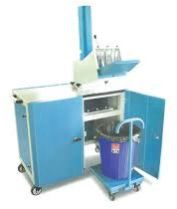
Biomedical Waste Shredder Machine
750,000 Per Piece
1 Piece (MOQ)
A Biomedical Waste Shredder is a machine designed specifically to shred and dispose of biomedical waste in a safe and efficient manner. This type of waste includes items like syringes, scalpels, bandages, tissues, and other medical waste that could potentially be infectious or hazardous. Proper shredding of biomedical waste ensures that it is rendered unrecognizable and safe for further disposal or treatment, reducing the risk of contamination or injury. Key Features: High-Quality Blades: Made from durable materials like wear resistant steels, designed to shred tough materials efficiently. Safety Mechanisms: Includes features like automatic shut-off in case of jams or if the shredder door is opened during operation. Capacity: Varies in size, with models capable of handling different volumes of waste depending on the needs of the facility. Compliance: Adheres to environmental and health regulations for the disposal of biomedical waste. Automation: Technocrat shredders are automated, requiring minimal human intervention after loading. Applications: Hospitals: For shredding used medical equipment and disposables. Laboratories: To safely dispose of contaminated materials. Pharmaceutical Companies: For shredding expired or recalled medicines. Waste Management Facilities: As part of the process for handling and disposing of hazardous medical waste. Biomedical waste shredders are a crucial part of the waste management process in medical and research facilities, ensuring that potentially dangerous waste is dealt with in a safe and environmentally responsible way.
Application : Biomedical Waste Management
Material : Stainless Steel
Shredding Capacity : 1-500 Kg/hr
Automatic Grade : Automatic
Brand Name : Technocrat
Country of Origin : India
...more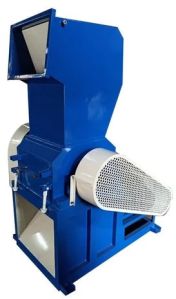
Automatic Plastic Shredder Machine
1,500,000 Per Piece
1 Piece (MOQ)
Shredding is a fundamental process in plastic recycling, playing a crucial role in converting plastic waste into reusable materials. Plastic waste, which can come from various sources like packaging, household items, automotive parts, and industrial products, needs to be properly processed to be recycled effectively. Shredding is the first critical step in this process.Key Roles of Shredding in Plastic Recycling: Volume Reduction: Shredding significantly reduces the size and volume of plastic waste, making it easier to handle, transport, and store. This is particularly important for large and bulky plastic items, such as containers, pipes, and automotive parts, which can be challenging to manage without size reduction. Preparation for Further Processing: Shredding breaks down plastic waste into smaller, more uniform pieces, which are easier to process in subsequent recycling stages. These stages include washing, sorting, and melting, where smaller pieces enhance efficiency and reduce the energy required for processing. Facilitation of Sorting: Shredded plastic is easier to sort by type, color, and quality. Sorting is essential because different types of plastics have different melting points and properties, and they must be separated to ensure high-quality recycled products. Automated sorting systems often rely on the uniform size of shredded plastic pieces for effective separation. Improvement in Melting and Reprocessing: Shredded plastic has a larger surface area, which makes it easier to melt during the reprocessing stage. This uniformity in size and shape ensures consistent melting, reducing the risk of contamination and improving the quality of the recycled plastic. Reduction of Contaminants: Shredding plastic waste helps in exposing contaminants such as labels, adhesives, and residues. Once shredded, these contaminants can be more easily removed through washing and other cleaning processes, ensuring that the final recycled material is of higher purity. Support for Manufacturing New Products: Shredded plastic serves as feedstock for producing new plastic products. The recycled plastic can be re-molded into a variety of products, from new containers and packaging to textiles and construction materials, contributing to a circular economy. Cost-Effective Recycling: Shredding plastic waste reduces transportation and processing costs. By decreasing the volume of waste and making it easier to process, shredding lowers the overall cost of recycling, making the process more economically viable. Reduction of Environmental Impact: Effective shredding and recycling of plastic waste reduce the need for virgin plastic production, which in turn conserves natural resources and reduces energy consumption. Additionally, recycling plastic waste helps mitigate pollution and the environmental damage caused by plastic waste in landfills and oceans. In summary, shredding is a crucial process in plastic recycling, enabling efficient size reduction, sorting, and processing of plastic waste. By breaking down plastics into manageable pieces, shredding facilitates recycling, helps reduce environmental impact, and supports the creation of new, sustainable plastic products.
Application : Industrial
Brand Name : Technocrat
Country of Origin : India
Driven Type : Electric
Certification : ISI Certified
Voltage : 220V
Warranty : 1 Year
...more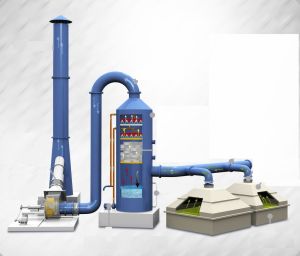
Air Pollution Control System
1,000,000 Per Piece
Brand Name : Technocrat
Material : Mild Steel
Driven Type : Electric
Application : Air Pollution Control
Voltage : 220V
Warranty : 1year
Country of Origin : India
...more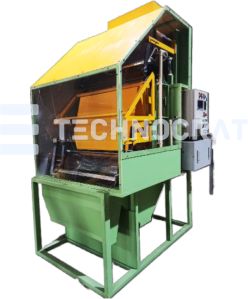
Electrostatic Separator
750,000 Per Piece
1 Piece (MOQ)
An Electrostatic Separator is a device used to separate particles based on their electrical charges. It leverages the principle that particles with different electrical properties (like conductivity or charge) respond differently when exposed to an electric field.Working Principle : Particles are first charged (positively or negatively) and then passed through an electric field. The field exerts a force on the charged particles, causing them to move in different trajectories depending on their charge.Applications : Mineral Processing: Separating valuable minerals from waste materials. Recycling: Sorting mixed waste streams, such as separating metals from plastics. Pollution Control: Removing particles from industrial emissions. Types : High Tension Roll Separators: Used for fine particle separation. Plate Separators: Suitable for larger particles. Advantages : Efficient at separating fine particles. Environmentally friendly, as it doesn’t require water or chemicals. Limitations : Not effective for all materials, especially those with similar electrical properties. Requires precise control of operating conditions for optimal performance. Electrostatic separators are valuable tools in industries where material separation is crucial, offering a clean and efficient method of sorting.
Brand Name : Technocrat
Finishing : Polished
Driven Type : Electric
Shape : Rectangular
Automatic Grade : Automatic
Power Source : Electric
Warranty : 1 Year
Country of Origin : India
...more
Shredder Machine
2,000,000 Per
Opening Hours
Technocrat Industrial Solutions Private Limited was established in 2023. With an origin in Haryana, the company focuses on manufacturing and supplying state-of-the-art recycling and waste management equipment. The company may not be a new entrant to the market, but very shortly after its inception, it has been one of the major providers of cutting-edge industrial solutions for the most critical needs related to sustainability and waste management.
Range of Innovative Equipment
Technocrat Industrial Solutions has a wide range of products in the form of double-shaft automatic metal shredder machines, electrostatic separators, and air pollution control systems. The product line serves diverse industries with bespoke solutions catering to recycling plants, applications in shredding, and waste management covering municipal solid and biomedical waste. This is of the utmost importance for companies as well as municipalities struggling to manage waste at an effective and eco-friendly level.
Compliance for Sustainability
Technocrat Industrial Solutions Private Limited was established with the vision of building sustainable industrial practices. Total solutions ranging from lithium-ion battery recycling plants to screening trommels are fundamentally defined through a commitment to solving challenges in the management of waste correspondingly with environmental priority. Adopting high technologies, the company helps clients increase efficiency in processing waste and contribute towards the preservation of ecology.
Increasing Influence on Industry
A new entrant in the market, Technocrat Industrial Solutions is finding recognition with its quality products and eco-friendly approach. Offering versatile solutions that are dependable as well as environment-friendly, the company is quite promisingly on its way to leadership in industrial recycling and waste management.